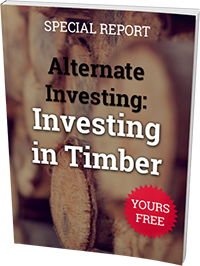If you are an avid follower of the markets, you know there are few absolutes in investing.
In fact, many of your most cherished beliefs about investing simply aren’t true. High-flying economies do not equate to high-flying stocks. The “free lunch” of diversification over the past decade hasn’t been all that it was cracked up to be. Investing in China or gold or commodities is not the only investment decision you’ll ever need to make.
In a world where “can’t-lose” investment themes get tossed out with remarkable regularity, the “small-cap effect” — the well-established observation that small-cap stocks consistently outperform large-cap stocks over the longer term — is one of the few that has stood the test of time.
Size Matters: And the Smaller the Better
It was the University of Chicago’s Eugene Fama, one of last year’s Nobel economics winners, and colleague Ken French who originated this thesis, confirming it with the requisite amounts of mind-numbing academic research. What’s behind the small-cap effect is still subject to debate. But whether you believe — as Fama and French do — that it is best explained as compensation for additional risk or it is simply a matter of market inefficiency, you’d be hard-pressed to prove that it does not exist.
In fact, as David Swensen, head of the Yale University endowment points out, if he didn’t have to consider Yale’s ongoing funding requirements and the trustees’ tolerance for occasional big drawdowns in the value of the endowment, there is no rational reason he would invest in anything but U.S. small-cap stocks.
The statistics Swensen cites are more than compelling. Between the bottom of the U.S. stock market in June 1932 and the end of 2006, the return of U.S. small caps rose 159,000-fold. That compares with to, say, a return of 19 times principal for “safe” U.S. government bills.
The Small-Cap Effect: All the Time, Everywhere?
Recent experience in the U.S. market confirms both the power and lockstep rigor of the “small cap effect.” Since the U.S. market bottomed in March 2009, the Russell Top 50 index of the largest U.S. companies has risen 111%. The Russell 1000, covering the 1,000 largest stocks, has gained 150%; The Russell 2000, covering the next 2,000 stocks, is up 197%. The Russell Microcap index — the smallest of the small — is up 220%.
What’s more, the small-cap effect seems to be global. You can find evidence for it particularly in other developed economies. Since 1955, a U.K. small-cap index offered an annual return of 15.8%, compared with 12% on a broader index.
This 3.8% gap compounded over time makes for spectacular outperformance. Since 1955, the small-cap index has returned 11,605%, compared with 811% for the broader market — a more than 14x difference.
The same research also compares the relative performance of small-cap indices in 30 other countries. It found that going back to 2000, small-caps, on average, have outperformed large-cap indices by 6.7% each and every year.
If you appreciate the power of compound interest, that is a mind-boggling difference and confirms that you should forget about U.S. small caps and go “all in” on global small-cap stocks.
Or Not…
While the big-picture case for small caps, U.S. or global, is well-established, there are just enough obvious “bad apples” in global markets that you could delude yourself into thinking you could do even better. After all, what makes for “bad apples” or “good apples” isn’t always obvious.
For example, chances are you’ve invested more in the high-growth, rip-roaring economy of China, than, say, Sweden. After all, China’s real gross domestic product (GDP) growth trounced GDP growth in the United States for the last 20 years — 10% annual growth versus just 2.6%.
Yet, despite the relentless cheerleading by the likes of Jim Rogers and other China Bulls, sticking with China through thick and thin has been a mistake. Over the past 20 years, you’d have made 9.2% a year in the United States and a mere 0.4% in China. In fact, a recent study of 105 years of markets showed that those based in the countries with the lowest GDP growth — the United Kingdom, the United States, Australia and Sweden — beat those with the highest by, on average, three percentage points a year.
Ironically, this underperformance holds for other prosperous, developed countries over time. Today, Austria boasts the highest per capita GDP in the euro zone, outside tiny Luxembourg. Yet, had you invested in stocks in then-Austria-Hungary on the eve of World War I — one of the world’s leading economies of its day — you’d have made absolutely no money over the course of the past 97 years.
So it matters where you invest in those small caps. And from the looks of it, Chinese small caps may not be the way to go.
Why You Won’t Go “All In” on U.S. Small-Cap Stocks
So why not just throw in the towel and invest in nothing but U.S. small-cap stocks?
Truth be told, you probably should.
But it turns out the biggest risk of small-cap investing is not in the companies themselves.
The risk is you.
First, chances are you can’t take the volatility. Small caps are a wild ride when markets take a dive.
Second, small caps tend to underperform large caps on an annual basis about one-third of the time. If those years come back to back for three or four years, you’d probably throw in the towel, no matter of the long-term upside.
Finally, although the psychological challenges of investing in U.S. small caps were present in past decades, they are exacerbated in today’s over-communicated world. The doom and gloomers will get to you eventually, and you’ll sell out (uncannily) at exactly the wrong time.
The bottom line?
The small-company effect has endured for decades. And I believe it will continue, thanks to the unchanging nature of human psychology.
The greatest irony is that it’s the people who care the least about the day-to-day movements in the stock market that the “small-cap” effect has made the richest.
If only I could be more like them…
In case you missed it, I encourage you to read my e-letter column from last week about why hedge fund underperformed last year. I also invite you to comment in the space provided below.




